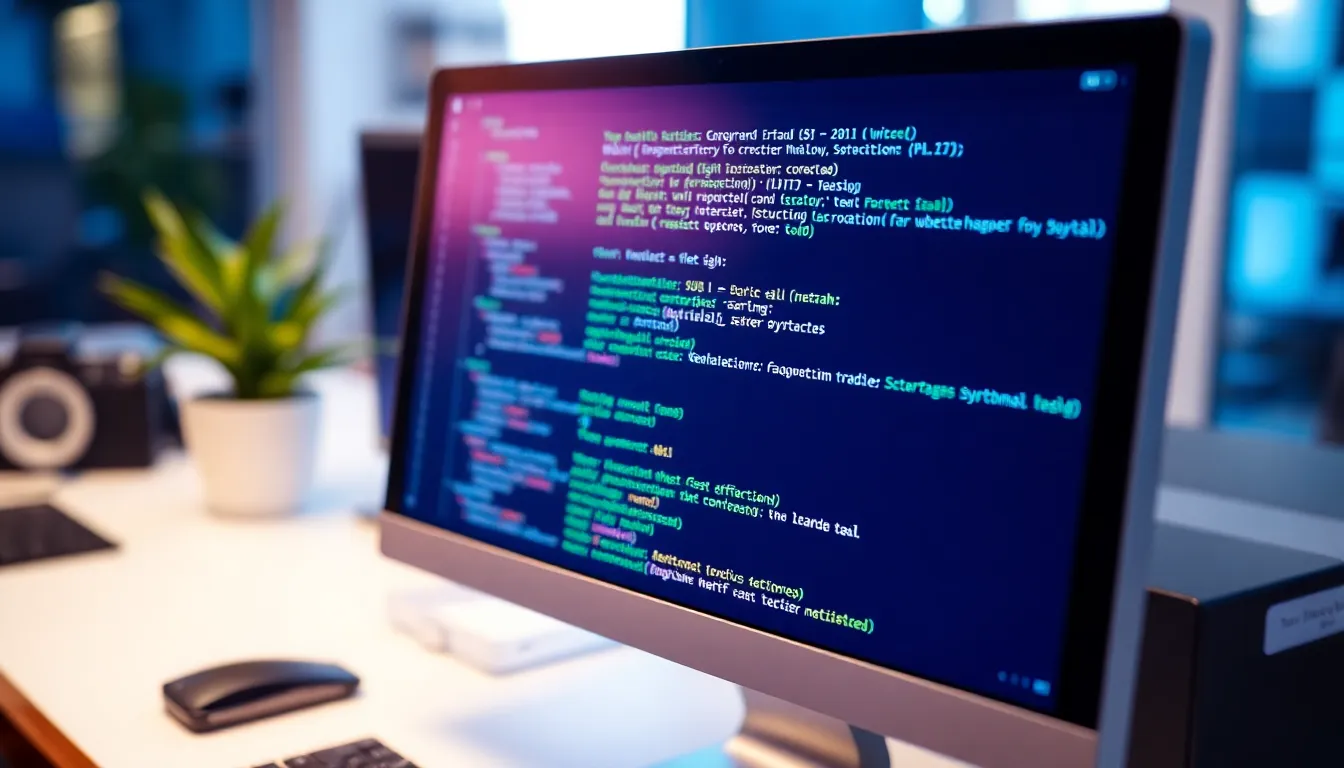
How to Tackle Python SDK 25.5a Burn Lag for Improved App Performance
In the fast-evolving world of technology, developers often face challenges that can hinder performance. One such issue is the burn lag associated with Python SDK 25.5a. This lag can significantly impact application efficiency, causing frustration for developers and users alike. Understanding the nuances of this problem is crucial for anyone working with this SDK.
As software continues to grow in complexity, addressing performance bottlenecks becomes essential. By diving into the specifics of Python SDK 25.5a burn lag, developers can uncover effective strategies to minimize its effects. This article aims to shed light on the causes, implications, and potential solutions, helping developers optimize their applications and enhance user experiences.
Python SDK 25.5a Burn Lag
Python SDK25.5a offers essential tools and functionalities for developers, addressing performance issues like burn lag that can impede application efficiency. Understanding its features and system requirements is crucial for optimal implementation.
Key Features
- Enhanced Performance: Python SDK25.5a includes optimizations that reduce processing time and resource usage, minimizing burn lag effects.
- Comprehensive Documentation: It provides extensive documentation, facilitating easier onboarding for developers and improving code accessibility.
- Cross-Platform Support: The SDK ensures compatibility across various platforms, enhancing application deployment flexibility.
- Robust APIs: A set of well-defined APIs allows seamless integration with existing systems, simplifying the development process.
- Built-in Debugging Tools: The SDK offers tools to monitor application performance, enabling developers to quickly identify and address burn lag issues.
System Requirements
| Component | Minimum Requirement | Recommended Requirement |
|---|---|---|
| Operating System | Windows 10, macOS 10.15, or Linux Kernel 4.15+ | Windows 11, macOS 11+, or Linux Kernel 5.4+ |
| RAM | 4 GB | 8 GB or more |
| Processor | Intel i3 or equivalent | Intel i5 or better |
| Disk Space | 500 MB free | 1 GB free or more |
| Python Version | Python 3.6 or later | Python 3.8 or later |
These specifications ensure that developers utilize Python SDK25.5a effectively, paving the way for improved application performance and user satisfaction.
Understanding Burn Lag

Burn lag refers to the delay in the execution of applications caused by inefficient resource management in Python SDK 25.5a. This performance issue can severely impact user experience and application reliability.
Definition of Burn Lag
Burn lag represents the time lost between initiating a process and the start of its execution. It occurs when the system encounters delays in resource allocation, processing, or communication, resulting in suboptimal application performance. In a development context, understanding burn lag is crucial for optimizing application efficiency and assuring user satisfaction.
Common Causes
- Resource Contention: Multiple processes vying for the same resources can lead to significant delays. This competition often results in performance degradation.
- Inefficient Algorithms: Poorly designed algorithms may introduce unnecessary complexity, further contributing to increased execution time and resource consumption.
- Latency in Network Calls: Remote data fetches and API calls can introduce lag due to network delays, especially if the endpoints experience high traffic or slow response times.
- Memory Management Issues: Ineffective memory allocation or garbage collection can lead to lag, as the system struggles to manage resources efficiently.
- Integration Challenges: Complex integrations with third-party services can exacerbate latency issues, causing interruptions in application flow and increased burn lag.
Identifying these factors helps developers troubleshoot and implement effective strategies to mitigate burn lag, thereby enhancing overall application performance and user satisfaction.
Analyzing Python SDK25.5a Burn Lag
Understanding burn lag serves as a crucial step for developers aiming to enhance application performance and user satisfaction within Python SDK 25.5a. The following sections provide insights into identifying performance issues and measuring lag duration effectively.
Identifying Performance Issues
Identifying performance issues related to burn lag involves assessing application behavior under varying loads. Developers can utilize performance profiling tools available within Python SDK 25.5a, such as the built-in debugging tools and performance metrics. Tracking resource usage and execution times aids in pinpointing specific inefficiencies.
Developers should focus on the following common indicators of lag:
- High CPU Utilization: Excessive CPU usage often points to inefficient algorithms or resource contention.
- Increased Memory Consumption: Elevated memory usage can lead to delays due to garbage collection or insufficient memory allocation.
- Network Latency: Slow responses from network calls may introduce delays in application execution.
- Long Execution Times: Review functions with unusually long execution times, as they may indicate bottlenecks in the code.
Measuring Lag Duration
Measuring lag duration requires precise monitoring of application performance during execution. Python SDK25.5a provides tools to benchmark performance at various stages of the application lifecycle.
To measure lag effectively, developers can implement the following strategies:
- Timestamping: Insert timestamps before and after key operations to calculate execution duration.
- Profiling Metrics: Use built-in profiling metrics within the SDK to gain insights into resource usage and execution times.
- Tool Integration: Integrate third-party monitoring tools that can track and report performance metrics, providing real-time data on application behavior.
- Load Testing: Conduct load testing to determine how the application behaves under different user scenarios, revealing specific instances of lag.
By identifying performance issues and measuring lag duration, developers can effectively address burn lag, ultimately leading to optimized applications and improved user experiences.
Troubleshooting Burn Lag in Python SDK25.5a
Addressing burn lag in Python SDK 25.5a requires systematic solutions and effective diagnostic tools. Identifying and resolving the underlying issues is essential for optimizing application performance.
Recommended Solutions
- Optimize Resource Management: Analyze resource allocation to avoid contention and ensure balanced usage across processes.
- Refine Algorithms: Evaluate algorithm efficiency by using optimized data structures and implementing computational techniques, reducing execution times.
- Reduce Network Latency: Minimize call frequencies and batch requests to lower waiting times for data, enhancing performance significantly.
- Enhance Memory Management: Implement proper memory management techniques, such as object pooling and garbage collection, to reduce memory overhead.
- Streamline Integration: Simplify integration points to eliminate bottlenecks originating from third-party services or external APIs impacting performance.
Tools for Diagnosis
- Performance Profilers: Utilize tools like cProfile or Py-Spy to track execution flow and identify slow components.
- Monitoring Solutions: Employ tools like Prometheus, Grafana, or New Relic to collect metrics and visualize performance over time.
- Logging Frameworks: Integrate structured logging libraries to capture detailed logs, aiding in pinpointing performance issues within the application.
- Load Testing Tools: Use JMeter or Gatling to simulate user traffic and observe application behavior under various loads, helping to identify potential lag scenarios.
- Debugging Tools: Leverage built-in debugging tools within the SDK, such as PDB, to analyze the application state during execution and determine lag sources.
Best Practices to Minimize Burn Lag
Minimizing burn lag involves employing effective strategies that optimize code and configure the environment for peak performance. Developers can adopt various techniques to address this challenge efficiently.
Code Optimization Techniques
- Simplify Algorithms: Streamlining algorithms reduces time complexity. Favor linear or logarithmic complexity whenever possible.
- Utilize Caching: Implement caching for frequently accessed data. This practice dramatically reduces repetitive calculations and resource contention.
- Optimize Loops: Minimize nested loops or unnecessary iterations, which can cause significant delays. Use list comprehensions for improved performance when applicable.
- Employ Asynchronous Code: Use asynchronous programming to handle I/O operations without blocking the main thread, thus improving responsiveness.
- Reduce Object Creation: Limit the instantiation of objects within tight loops. Reuse objects to decrease memory allocation overhead.
- Profile Your Code: Regularly use profiling tools to identify and resolve bottlenecks. Tools like cProfile or Py-Spy provide insights into execution time and resource usage.

Environment Configuration
- Adjust Resource Allocation: Allocate sufficient CPU and memory based on application requirements. Monitor resource usage to ensure optimal allocation.
- Use Virtual Environments: Implement virtual environments to manage dependencies effectively. This helps prevent conflicts and promotes consistency across development and production.
- Optimize Network Settings: Configure network settings for lower latency. Consider using faster DNS servers and reducing any unnecessary hops.
- Update Dependencies: Regularly update libraries and frameworks to leverage performance improvements and bug fixes from newer versions.
- Configure Threading Options: Adjust threading settings to optimize concurrency. Fine-tuning the number of threads based on workload can reduce contention.
- Implement Load Balancing: For distributed applications, use load balancing to evenly distribute workloads across servers, preventing any single server from becoming a bottleneck.



